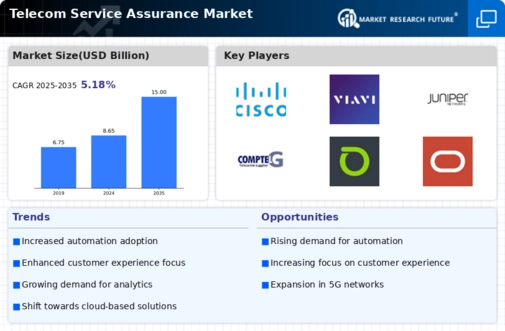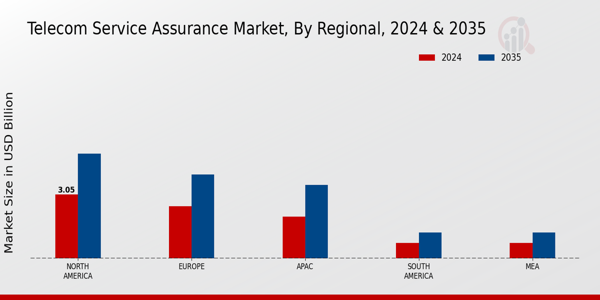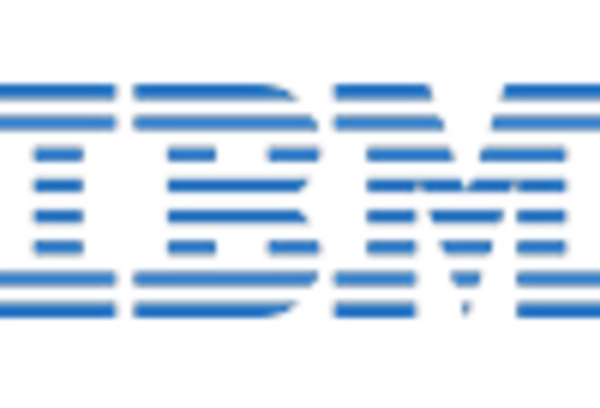LIST OF ASSUMPTIONSNorth America Market SIZE ESTIMATES & FORECAST, BY SERVICE TYPE, 2019-2035 (USD Billions)North America Market SIZE ESTIMATES & FORECAST, BY DEPLOYMENT TYPE, 2019-2035 (USD Billions)North America Market SIZE ESTIMATES & FORECAST, BY END USER, 2019-2035 (USD Billions)North America Market SIZE ESTIMATES & FORECAST, BY COMPONENTS, 2019-2035 (USD Billions)North America Market SIZE ESTIMATES & FORECAST, BY REGIONAL, 2019-2035 (USD Billions)US Market SIZE ESTIMATES & FORECAST, BY SERVICE TYPE, 2019-2035 (USD Billions)US Market SIZE ESTIMATES & FORECAST, BY DEPLOYMENT TYPE, 2019-2035 (USD Billions)US Market SIZE ESTIMATES & FORECAST, BY END USER, 2019-2035 (USD Billions)US Market SIZE ESTIMATES & FORECAST, BY COMPONENTS, 2019-2035 (USD Billions)US Market SIZE ESTIMATES & FORECAST, BY REGIONAL, 2019-2035 (USD Billions)Canada Market SIZE ESTIMATES & FORECAST, BY SERVICE TYPE, 2019-2035 (USD Billions)Canada Market SIZE ESTIMATES & FORECAST, BY DEPLOYMENT TYPE, 2019-2035 (USD Billions)Canada Market SIZE ESTIMATES & FORECAST, BY END USER, 2019-2035 (USD Billions)Canada Market SIZE ESTIMATES & FORECAST, BY COMPONENTS, 2019-2035 (USD Billions)Canada Market SIZE ESTIMATES & FORECAST, BY REGIONAL, 2019-2035 (USD Billions)Europe Market SIZE ESTIMATES & FORECAST, BY SERVICE TYPE, 2019-2035 (USD Billions)Europe Market SIZE ESTIMATES & FORECAST, BY DEPLOYMENT TYPE, 2019-2035 (USD Billions)Europe Market SIZE ESTIMATES & FORECAST, BY END USER, 2019-2035 (USD Billions)Europe Market SIZE ESTIMATES & FORECAST, BY COMPONENTS, 2019-2035 (USD Billions)Europe Market SIZE ESTIMATES & FORECAST, BY REGIONAL, 2019-2035 (USD Billions)Germany Market SIZE ESTIMATES & FORECAST, BY SERVICE TYPE, 2019-2035 (USD Billions)Germany Market SIZE ESTIMATES & FORECAST, BY DEPLOYMENT TYPE, 2019-2035 (USD Billions)Germany Market SIZE ESTIMATES & FORECAST, BY END USER, 2019-2035 (USD Billions)Germany Market SIZE ESTIMATES & FORECAST, BY COMPONENTS, 2019-2035 (USD Billions)Germany Market SIZE ESTIMATES & FORECAST, BY REGIONAL, 2019-2035 (USD Billions)UK Market SIZE ESTIMATES & FORECAST, BY SERVICE TYPE, 2019-2035 (USD Billions)UK Market SIZE ESTIMATES & FORECAST, BY DEPLOYMENT TYPE, 2019-2035 (USD Billions)UK Market SIZE ESTIMATES & FORECAST, BY END USER, 2019-2035 (USD Billions)UK Market SIZE ESTIMATES & FORECAST, BY COMPONENTS, 2019-2035 (USD Billions)UK Market SIZE ESTIMATES & FORECAST, BY REGIONAL, 2019-2035 (USD Billions)France Market SIZE ESTIMATES & FORECAST, BY SERVICE TYPE, 2019-2035 (USD Billions)France Market SIZE ESTIMATES & FORECAST, BY DEPLOYMENT TYPE, 2019-2035 (USD Billions)France Market SIZE ESTIMATES & FORECAST, BY END USER, 2019-2035 (USD Billions)France Market SIZE ESTIMATES & FORECAST, BY COMPONENTS, 2019-2035 (USD Billions)France Market SIZE ESTIMATES & FORECAST, BY REGIONAL, 2019-2035 (USD Billions)Russia Market SIZE ESTIMATES & FORECAST, BY SERVICE TYPE, 2019-2035 (USD Billions)Russia Market SIZE ESTIMATES & FORECAST, BY DEPLOYMENT TYPE, 2019-2035 (USD Billions)Russia Market SIZE ESTIMATES & FORECAST, BY END USER, 2019-2035 (USD Billions)Russia Market SIZE ESTIMATES & FORECAST, BY COMPONENTS, 2019-2035 (USD Billions)Russia Market SIZE ESTIMATES & FORECAST, BY REGIONAL, 2019-2035 (USD Billions)Italy Market SIZE ESTIMATES & FORECAST, BY SERVICE TYPE, 2019-2035 (USD Billions)Italy Market SIZE ESTIMATES & FORECAST, BY DEPLOYMENT TYPE, 2019-2035 (USD Billions)Italy Market SIZE ESTIMATES & FORECAST, BY END USER, 2019-2035 (USD Billions)Italy Market SIZE ESTIMATES & FORECAST, BY COMPONENTS, 2019-2035 (USD Billions)Italy Market SIZE ESTIMATES & FORECAST, BY REGIONAL, 2019-2035 (USD Billions)Spain Market SIZE ESTIMATES & FORECAST, BY SERVICE TYPE, 2019-2035 (USD Billions)Spain Market SIZE ESTIMATES & FORECAST, BY DEPLOYMENT TYPE, 2019-2035 (USD Billions)Spain Market SIZE ESTIMATES & FORECAST, BY END USER, 2019-2035 (USD Billions)Spain Market SIZE ESTIMATES & FORECAST, BY COMPONENTS, 2019-2035 (USD Billions)Spain Market SIZE ESTIMATES & FORECAST, BY REGIONAL, 2019-2035 (USD Billions)Rest of Europe Market SIZE ESTIMATES & FORECAST, BY SERVICE TYPE, 2019-2035 (USD Billions)Rest of Europe Market SIZE ESTIMATES & FORECAST, BY DEPLOYMENT TYPE, 2019-2035 (USD Billions)Rest of Europe Market SIZE ESTIMATES & FORECAST, BY END USER, 2019-2035 (USD Billions)Rest of Europe Market SIZE ESTIMATES & FORECAST, BY COMPONENTS, 2019-2035 (USD Billions)Rest of Europe Market SIZE ESTIMATES & FORECAST, BY REGIONAL, 2019-2035 (USD Billions)APAC Market SIZE ESTIMATES & FORECAST, BY SERVICE TYPE, 2019-2035 (USD Billions)APAC Market SIZE ESTIMATES & FORECAST, BY DEPLOYMENT TYPE, 2019-2035 (USD Billions)APAC Market SIZE ESTIMATES & FORECAST, BY END USER, 2019-2035 (USD Billions)APAC Market SIZE ESTIMATES & FORECAST, BY COMPONENTS, 2019-2035 (USD Billions)APAC Market SIZE ESTIMATES & FORECAST, BY REGIONAL, 2019-2035 (USD Billions)China Market SIZE ESTIMATES & FORECAST, BY SERVICE TYPE, 2019-2035 (USD Billions)China Market SIZE ESTIMATES & FORECAST, BY DEPLOYMENT TYPE, 2019-2035 (USD Billions)China Market SIZE ESTIMATES & FORECAST, BY END USER, 2019-2035 (USD Billions)China Market SIZE ESTIMATES & FORECAST, BY COMPONENTS, 2019-2035 (USD Billions)China Market SIZE ESTIMATES & FORECAST, BY REGIONAL, 2019-2035 (USD Billions)India Market SIZE ESTIMATES & FORECAST, BY SERVICE TYPE, 2019-2035 (USD Billions)India Market SIZE ESTIMATES & FORECAST, BY DEPLOYMENT TYPE, 2019-2035 (USD Billions)India Market SIZE ESTIMATES & FORECAST, BY END USER, 2019-2035 (USD Billions)India Market SIZE ESTIMATES & FORECAST, BY COMPONENTS, 2019-2035 (USD Billions)India Market SIZE ESTIMATES & FORECAST, BY REGIONAL, 2019-2035 (USD Billions)Japan Market SIZE ESTIMATES & FORECAST, BY SERVICE TYPE, 2019-2035 (USD Billions)Japan Market SIZE ESTIMATES & FORECAST, BY DEPLOYMENT TYPE, 2019-2035 (USD Billions)Japan Market SIZE ESTIMATES & FORECAST, BY END USER, 2019-2035 (USD Billions)Japan Market SIZE ESTIMATES & FORECAST, BY COMPONENTS, 2019-2035 (USD Billions)Japan Market SIZE ESTIMATES & FORECAST, BY REGIONAL, 2019-2035 (USD Billions)South Korea Market SIZE ESTIMATES & FORECAST, BY SERVICE TYPE, 2019-2035 (USD Billions)South Korea Market SIZE ESTIMATES & FORECAST, BY DEPLOYMENT TYPE, 2019-2035 (USD Billions)South Korea Market SIZE ESTIMATES & FORECAST, BY END USER, 2019-2035 (USD Billions)South Korea Market SIZE ESTIMATES & FORECAST, BY COMPONENTS, 2019-2035 (USD Billions)South Korea Market SIZE ESTIMATES & FORECAST, BY REGIONAL, 2019-2035 (USD Billions)Malaysia Market SIZE ESTIMATES & FORECAST, BY SERVICE TYPE, 2019-2035 (USD Billions)Malaysia Market SIZE ESTIMATES & FORECAST, BY DEPLOYMENT TYPE, 2019-2035 (USD Billions)Malaysia Market SIZE ESTIMATES & FORECAST, BY END USER, 2019-2035 (USD Billions)Malaysia Market SIZE ESTIMATES & FORECAST, BY COMPONENTS, 2019-2035 (USD Billions)Malaysia Market SIZE ESTIMATES & FORECAST, BY REGIONAL, 2019-2035 (USD Billions)Thailand Market SIZE ESTIMATES & FORECAST, BY SERVICE TYPE, 2019-2035 (USD Billions)Thailand Market SIZE ESTIMATES & FORECAST, BY DEPLOYMENT TYPE, 2019-2035 (USD Billions)Thailand Market SIZE ESTIMATES & FORECAST, BY END USER, 2019-2035 (USD Billions)Thailand Market SIZE ESTIMATES & FORECAST, BY COMPONENTS, 2019-2035 (USD Billions)Thailand Market SIZE ESTIMATES & FORECAST, BY REGIONAL, 2019-2035 (USD Billions)Indonesia Market SIZE ESTIMATES & FORECAST, BY SERVICE TYPE, 2019-2035 (USD Billions)Indonesia Market SIZE ESTIMATES & FORECAST, BY DEPLOYMENT TYPE, 2019-2035 (USD Billions)Indonesia Market SIZE ESTIMATES & FORECAST, BY END USER, 2019-2035 (USD Billions)Indonesia Market SIZE ESTIMATES & FORECAST, BY COMPONENTS, 2019-2035 (USD Billions)Indonesia Market SIZE ESTIMATES & FORECAST, BY REGIONAL, 2019-2035 (USD Billions)Rest of APAC Market SIZE ESTIMATES & FORECAST, BY SERVICE TYPE, 2019-2035 (USD Billions)Rest of APAC Market SIZE ESTIMATES & FORECAST, BY DEPLOYMENT TYPE, 2019-2035 (USD Billions)Rest of APAC Market SIZE ESTIMATES & FORECAST, BY END USER, 2019-2035 (USD Billions)Rest of APAC Market SIZE ESTIMATES & FORECAST, BY COMPONENTS, 2019-2035 (USD Billions)Rest of APAC Market SIZE ESTIMATES & FORECAST, BY REGIONAL, 2019-2035 (USD Billions)South America Market SIZE ESTIMATES & FORECAST, BY SERVICE TYPE, 2019-2035 (USD Billions)South America Market SIZE ESTIMATES & FORECAST, BY DEPLOYMENT TYPE, 2019-2035 (USD Billions)South America Market SIZE ESTIMATES & FORECAST, BY END USER, 2019-2035 (USD Billions)South America Market SIZE ESTIMATES & FORECAST, BY COMPONENTS, 2019-2035 (USD Billions)South America Market SIZE ESTIMATES & FORECAST, BY REGIONAL, 2019-2035 (USD Billions)Brazil Market SIZE ESTIMATES & FORECAST, BY SERVICE TYPE, 2019-2035 (USD Billions)Brazil Market SIZE ESTIMATES & FORECAST, BY DEPLOYMENT TYPE, 2019-2035 (USD Billions)Brazil Market SIZE ESTIMATES & FORECAST, BY END USER, 2019-2035 (USD Billions)Brazil Market SIZE ESTIMATES & FORECAST, BY COMPONENTS, 2019-2035 (USD Billions)Brazil Market SIZE ESTIMATES & FORECAST, BY REGIONAL, 2019-2035 (USD Billions)Mexico Market SIZE ESTIMATES & FORECAST, BY SERVICE TYPE, 2019-2035 (USD Billions)Mexico Market SIZE ESTIMATES & FORECAST, BY DEPLOYMENT TYPE, 2019-2035 (USD Billions)Mexico Market SIZE ESTIMATES & FORECAST, BY END USER, 2019-2035 (USD Billions)Mexico Market SIZE ESTIMATES & FORECAST, BY COMPONENTS, 2019-2035 (USD Billions)Mexico Market SIZE ESTIMATES & FORECAST, BY REGIONAL, 2019-2035 (USD Billions)Argentina Market SIZE ESTIMATES & FORECAST, BY SERVICE TYPE, 2019-2035 (USD Billions)Argentina Market SIZE ESTIMATES & FORECAST, BY DEPLOYMENT TYPE, 2019-2035 (USD Billions)Argentina Market SIZE ESTIMATES & FORECAST, BY END USER, 2019-2035 (USD Billions)Argentina Market SIZE ESTIMATES & FORECAST, BY COMPONENTS, 2019-2035 (USD Billions)Argentina Market SIZE ESTIMATES & FORECAST, BY REGIONAL, 2019-2035 (USD Billions)Rest of South America Market SIZE ESTIMATES & FORECAST, BY SERVICE TYPE, 2019-2035 (USD Billions)Rest of South America Market SIZE ESTIMATES & FORECAST, BY DEPLOYMENT TYPE, 2019-2035 (USD Billions)Rest of South America Market SIZE ESTIMATES & FORECAST, BY END USER, 2019-2035 (USD Billions)Rest of South America Market SIZE ESTIMATES & FORECAST, BY COMPONENTS, 2019-2035 (USD Billions)Rest of South America Market SIZE ESTIMATES & FORECAST, BY REGIONAL, 2019-2035 (USD Billions)MEA Market SIZE ESTIMATES & FORECAST, BY SERVICE TYPE, 2019-2035 (USD Billions)MEA Market SIZE ESTIMATES & FORECAST, BY DEPLOYMENT TYPE, 2019-2035 (USD Billions)MEA Market SIZE ESTIMATES & FORECAST, BY END USER, 2019-2035 (USD Billions)MEA Market SIZE ESTIMATES & FORECAST, BY COMPONENTS, 2019-2035 (USD Billions)MEA Market SIZE ESTIMATES & FORECAST, BY REGIONAL, 2019-2035 (USD Billions)GCC Countries Market SIZE ESTIMATES & FORECAST, BY SERVICE TYPE, 2019-2035 (USD Billions)GCC Countries Market SIZE ESTIMATES & FORECAST, BY DEPLOYMENT TYPE, 2019-2035 (USD Billions)GCC Countries Market SIZE ESTIMATES & FORECAST, BY END USER, 2019-2035 (USD Billions)GCC Countries Market SIZE ESTIMATES & FORECAST, BY COMPONENTS, 2019-2035 (USD Billions)GCC Countries Market SIZE ESTIMATES & FORECAST, BY REGIONAL, 2019-2035 (USD Billions)South Africa Market SIZE ESTIMATES & FORECAST, BY SERVICE TYPE, 2019-2035 (USD Billions)South Africa Market SIZE ESTIMATES & FORECAST, BY DEPLOYMENT TYPE, 2019-2035 (USD Billions)South Africa Market SIZE ESTIMATES & FORECAST, BY END USER, 2019-2035 (USD Billions)South Africa Market SIZE ESTIMATES & FORECAST, BY COMPONENTS, 2019-2035 (USD Billions)South Africa Market SIZE ESTIMATES & FORECAST, BY REGIONAL, 2019-2035 (USD Billions)Rest of MEA Market SIZE ESTIMATES & FORECAST, BY SERVICE TYPE, 2019-2035 (USD Billions)Rest of MEA Market SIZE ESTIMATES & FORECAST, BY DEPLOYMENT TYPE, 2019-2035 (USD Billions)Rest of MEA Market SIZE ESTIMATES & FORECAST, BY END USER, 2019-2035 (USD Billions)Rest of MEA Market SIZE ESTIMATES & FORECAST, BY COMPONENTS, 2019-2035 (USD Billions)Rest of MEA Market SIZE ESTIMATES & FORECAST, BY REGIONAL, 2019-2035 (USD Billions)PRODUCT LAUNCH/PRODUCT DEVELOPMENT/APPROVALACQUISITION/PARTNERSHIP\r\n
-
\r\n
-
\r\n
-
LIST Of figures
-
\r\n










Leave a Comment